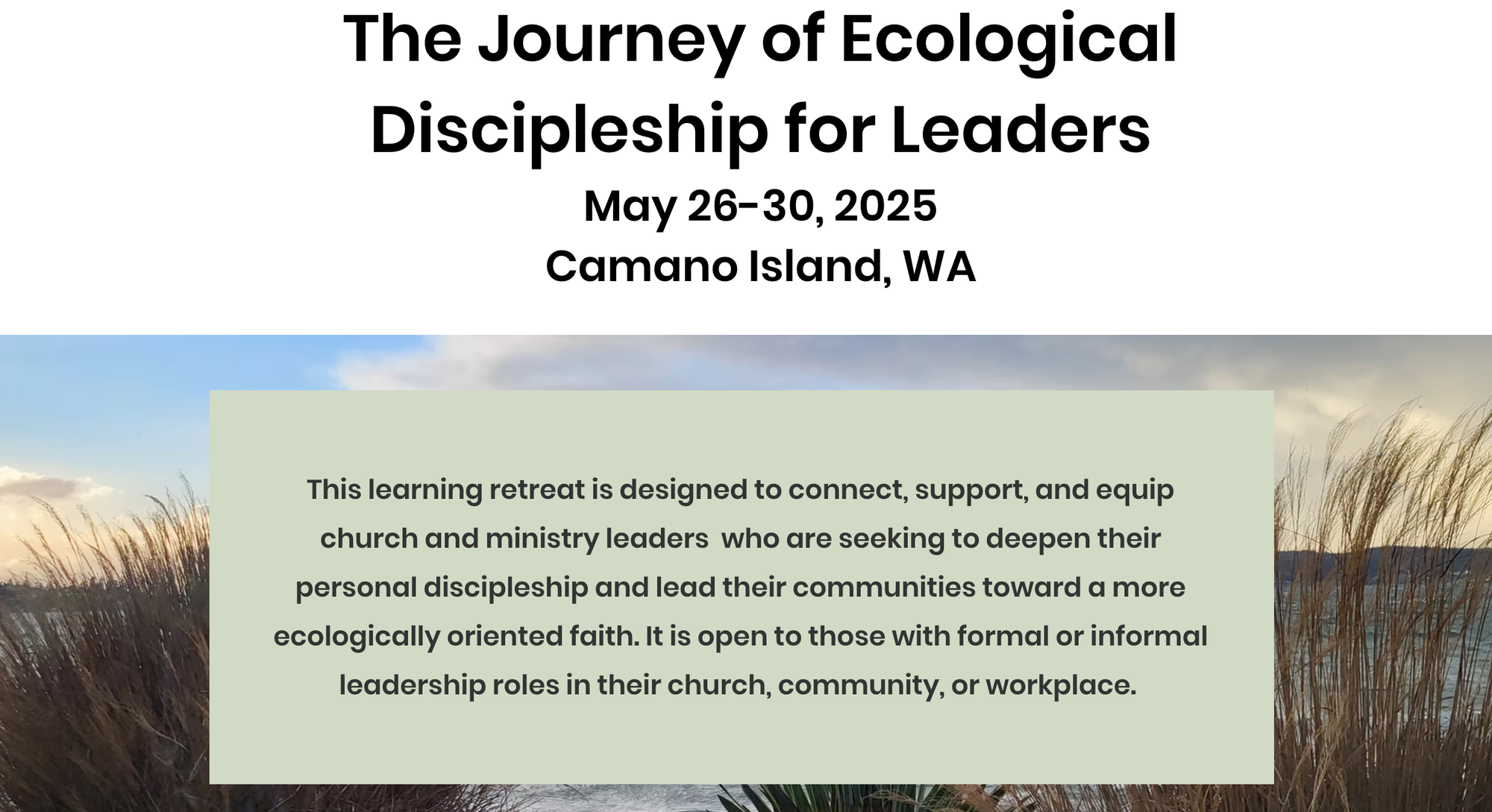This third piece in my series, “The Journey of Ecological Discipleship,” focuses on shared characteristics of the journey. You can check out the the first two HERE.
Thanks for reading - James.
A Pattern Emerges
Think about a journey that was transformative for you: your first week away at summer camp, an extended hiking trip in the wilderness, figuring out how to find your way around a city, traveling to a foreign country, getting married, moving, getting divorced, starting a new career. What was that journey like? What hopes and fears did you bring to it? What did you learn along the way? Who journeyed with you? In what ways did the journey change you?
Although everyone's experience is unique, transformative journeys tend to follow a pattern. A significant disruption, sometimes by choice, sometimes not, compels us to leave the place and community we call home (literally and/or figuratively) and set off on a journey. We find ourselves in new territory that tests our strength and skill, challenges our preconceptions, forces us to confront new ideas, people, and experiences, and requires us to change. When (if) we return home, we come back a different person, ready to live in a new way.
The journey of ecological discipleship follows this pattern, inviting those who hear the call to leave home, traverse new territory, and return home more deeply connected to oneself, one's community, the earth, and God. I have had the privilege to accompany many people on this journey, and have observed enough similarities to chart out a basic course and describe the distinct terrain as a way to help travelers find their way. Here are some common characteristics.

The Journey Is Inward and Outward.
Ecological discipleship is an inward journey that invites us to look within and know ourselves as creatures within the community of creation. It calls us to greater depths of personal attention, care, and love, to nurture the deep place within each of us that is intimately connected to Creator and creation. At the same time, it is an outward journey that calls us to intentional immersion in the world around us. This involves, as much as possible, time spent enjoying, learning about, and caring for the particular landscapes and ecosystems which make our lives possible. It may also involve traveling and exploring new landscapes, not as a tourist but as a pilgrim and student.

The Journey is not Linear, Smooth, or Fast.
While the journey has a basic progression, most people do not move through the stages in smooth succession. Journeys are unpredictable; like any good transformative experience, there are surprises along the way. People sometimes discover that they love a particular stage of the journey and linger longer than they had planned. (Some even decide to settle down and stay there). People also encounter unexpected challenges - some internal, some external. It is often these challenges that prove the most transformative. And while many aspects of the journey can be experienced in one day (see the story of Jesus' Transfiguration in Matt 17:1-9), ecological discipleship is a lifetime endeavor.

The Journey Is Individual and Communal.
Each person must navigate the journey for themselves, and there are times when we need to embrace solitude and travel alone for a while. But having a companion to travel with, or a whole community, is preferable. Discipleship is meant to be cultivated in and for community. Even when a solo journey is called for, it is always with the goal of returning to one's community as a blessing.
As theologian Dietrich Bonhoeffer wrote, "Let him who cannot be alone beware of community... Let him who is not in community beware of being alone."

The Journey Has Eight Stages
There are eight distinct stages in the journey of ecological discipleship. Each has its own features, or terrain, and requires different things from those who are traveling through. Although the stages have a logical order, ecological disciples often have different starting points and move around the stages quite freely. That said, most of the people I work with start out in stage one, so it is listed first.
Stage 1. Resist with Critique
Stage 2. Repent with Contrition
Stage 3. Release with Courage
Stage 4. Rewild with Curiosity
Stage 5. Reimagine with Childlikeness
Stage 6. Reintegrate with Coherence
Stage 7. Return with Courage
Stage 8. Reform with Conviction
You'll note that each stage begins with a word that starts with "re" and ends with a word that starts with "c." The "re" words remind us that we are not after something new - the journey is about rediscovering our true nature and calling. The "re" words also represent the outward focus of each stage. The "c" words represent the inner dimension of each stage - what is required of us as we navigate a particular leg of the journey.
My next piece will describe the stages in more detail. Until then, here are a few questions for reflection. I'd love to hear your answers - you can post in the comments, or reach out to me directly at james.amadon@circlewood.online.
With you on The Way,
James
SPECIAL NOTE: I am leading an upcoming week-long learning retreat exploring these themes. If you want to learn more, click on the image below.
